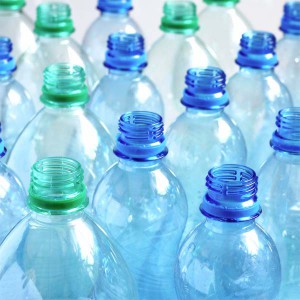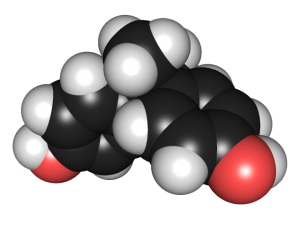PFAS Expanding the Targets for California’s Proposition 65 Liability
By Brian Ledger, Los Angeles on January 11, 2023
Proposition 65 Background
The California law commonly referred to as “Proposition 65” prohibits businesses from knowingly and intentionally exposing any individual in the State to a listed chemical without first giving a clear and reasonable warning. Violations of Proposition 65 can lead to penalties of up to $2500 per violation per day, and can carry the possibility of paying a plaintiff attorneys’ fees. Proposition 65 provides private parties the right to enforce this law on behalf of the People of the State (if the State chooses not to), which has spawned a cottage industry of enforcement plaintiff attorneys capitalizing upon this plaintiff-friendly law.
PFAS Chemicals Added to the List
Under Proposition 65, the State maintains two lists of chemicals: one for carcinogens and another for reproductive toxicants. The List now exceeds over 900 such chemicals and the State updates the List annually with new additions.
PFAS (per- and polyfluoroalkyl substances) are a class of thousands of chemicals, and they are found in many different consumer, commercial, and industrial products. PFAS appear set to take center stage on the Proposition 65 landscape, both from a litigation and regulatory perspective. In 2017, perfluorooctanoic acid (PFOA) and perfluorooctane sulfonate (PFOS) were identified by the State as reproductive toxins and added to the List. On December 31, 2021, the State added perfluorononanoic acid (PFNA) to the List. Following a one-year grace period, enforcement for PFNA can now begin on January 1, 2023. The State is also considering several other PFAS: PFHxS and PFDA. As research concerning the impacts of many PFAS is intensively proceeding, we would expect the State may identify further PFAS to add to the List in the near future.
Products of Concern
PFAS have many beneficial properties, which has led to its use in many different industries and for varied products. PFAS can impart oil, water, stain and soil repellent barriers, chemical and temperature resistance, and surfactant properties to products, some of which are considered essential to health, safety, or modern life. The following are examples of some common products:
- Water resistant clothing and footwear
- Upholstery and carpeting
- Cosmetics and dental products
- Electronics
- Paints and other coatings
- Firefighting foam, and equipment and protective clothing
- Medical products
- Paper and cardboard, including food packaging
Recent Notices
Gordon Rees Scully Mansukhani regularly monitors the Proposition 65 Notices of Violation to keep on top of any trends, so that we may promptly inform our clients who may be impacted. Significantly, we have noticed an important trend over the last 2 months: a dramatic increase in the number of Notices targeting products with PFAS. Recent Notices have targeted outerwear clothing and rain jackets, baby bibs, bath pillows, duffel bags, umbrellas, shower liners, crib mattress pads, tablecloths, paper straws, and numerous cosmetics.
Tips for Companies to Help Protect Against Proposition 65 Liability
To minimize the potential for Proposition 65 liability, companies should consider the following:
Working with Suppliers to obtain maximum protection: companies obtaining products from upstream suppliers should obtain the best information possible from those suppliers regarding the presence of PFAS in the product, and confirm Proposition 65 compliance in its contract.
Product Testing: Depending upon the circumstances, product testing can be considered. Attorney involvement should also be considered if testing, as attorney-client privileges may be important. Also, companies obtaining product from upstream suppliers should request any testing results conducted by the suppliers.
Proper Warnings: Proposition 65 provides a “safe harbor” for those products containing a compliant warning. The law allows for both long-form and short-form warnings. The long-form warnings require identification of at least one listed chemical, whereas the short-form warnings generically identify carcinogens and/or reproductive toxicants. When considering warnings, in the quest to avoid Proposition 65 liability, some companies will provide a Proposition 65 warning regardless of any specific information actually requiring the warning. We recommend extreme caution attempting to achieve Proposition 65 compliance by providing long-form warnings identifying PFAS without information confirming the presence of PFAS. The regulatory landscape for PFAS is evolving rapidly, and some states, including California, and have banned the use of PFAS in certain products; thus, a long-form Proposition 65 warning concerning PFAS (without any specific supporting data) raises the potential for triggering liability under other laws.
GRSM regularly counsels clients seeking to comply with Proposition 65 and is available to assist any company seeking advice to maximize its liability protection.

 On October 1, 2020, California passed a law identified as the Toxic Free Cosmetics Act. The Act will prohibit, beginning on January 1, 2025, the manufacturing or selling of any cosmetic product with any intentionally added amount of 24 specified chemicals. The specific list of chemicals includes certain phthalates, formaldehyde, mercury, and PFAS (certain per- and polyfluoroalkyl substances). Although some states have previously passed legislation banning some of the specified chemicals in cosmetic products (e.g., in children’s products), California is the first state to pass such a broad band as to cosmetics in general, and specifically to PFAS.
On October 1, 2020, California passed a law identified as the Toxic Free Cosmetics Act. The Act will prohibit, beginning on January 1, 2025, the manufacturing or selling of any cosmetic product with any intentionally added amount of 24 specified chemicals. The specific list of chemicals includes certain phthalates, formaldehyde, mercury, and PFAS (certain per- and polyfluoroalkyl substances). Although some states have previously passed legislation banning some of the specified chemicals in cosmetic products (e.g., in children’s products), California is the first state to pass such a broad band as to cosmetics in general, and specifically to PFAS.
